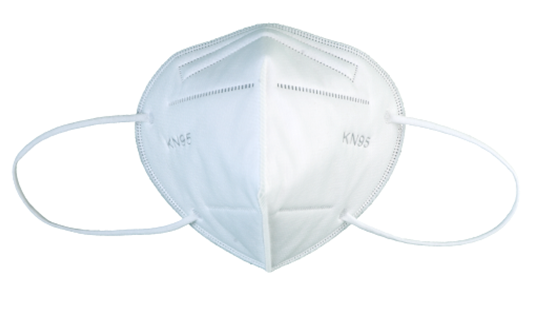I. Breeding of seedlings of big-leaved fast-growing mites Reproduction material. The large-leaf fast-eared pupa breeds with seedling roots. The roots were selected from the main and lateral roots of a 1-year-old large-leaved fast-growing mite, 0.5-1.5 cm in diameter, and cut into 7-8 cm long root segments. The root storage that is purchased from other places can be used in a lee-sun-deep ditch with a depth of 40 cm and a width of 1 m, a 60% moisture sap, a layer of sand (about 5 cm), and a layer of roots (about 5 cm). Thick), buried 4-5 layers of roots, covered with soil 10 cm, covered plastic film. Nursery treatment. The key to the choice of nursery is the absence of stagnant water and avoid low-lying land. The trampoline is arranging for a width of 1-1.2 meters and a height of 10 centimeters or more, and applying 100 kg of calcium phosphate per acre. Nursery methods. The roots were planted in a boring machine with a flat burial method, and the bottom of the botany of the root was buried in the earth at 4-5 cm. Immediately after the planting, the swill was poured. Nursery plants are spaced 30 cm and 50 cm apart. The planting time is from March to April, and it is planted before the large-leaf fast-growing larvae sprout. Seedling management. During the seedlings, they watered in the dry season. When the seedling height is 10-15 cm, the first picking is performed. When the seedling height is 30 cm, the second picking is performed. II. High-yield cultivation of large-leaved fast-growing mites The key to the choice of afforestation land is to have no standing water and avoid afforestation in low-lying land. Afforestation was carried out in the March-April months prior to the sprouting of the large-leaved fast-growing mites, and different methods were adopted for site preparation according to different cultivation modes. The materials that were propagated in the sand or nursery were cut off and afforested as required. Feed base model. Hole-like soil preparation: The spacing is 80 centimeters and 100 centimeters. Remove the weeds from the afforestation sites. The loose soil is 20 centimeters deep. Apply 0.2 kg of calcium phosphate per well and mix well. Strip soil preparation: The spacing is 50 centimeters and 100 centimeters. Remove the weeds from the afforestation grounds. The loose soil is 20 centimeters deep. Apply 0.2 g of calcium phosphate every 50 centimeters. Mix thoroughly. The method of planting is the same as the method of planting seedlings. Eco-base model. Point-like soil preparation: spacing of 2 meters and 3 meters, removing weeds from afforestation sites, loosing soil 20 cm deep, applying 0.2 kg of calcium phosphate per well, and mix thoroughly. When planting, the roots should be buried 6-7 cm, 2 plants per hole, soil compaction, watering, cover 30 cm 30 m rice mulch, heat and moisture, and promote the growth of buds and roots. After emergence, the seedlings will be drawn from the mulch. For arid and sandy lands with arid environment, they should be used for windbreak and sand-fixation to build ecological forests. The depth of planting can be seen in the depth of wet sand and the environmental conditions. The depth of seedling planting ranges from 20 to 80 cm. After planting, the seedlings above the ground will be cut off to promote branching and make them grow. Mixed forest model. The main choice is slow growth, and the young forest is a negative-tolerant plant (such as Camellia oleifera, Toona sinensis, etc.) as a mixed forest. According to the different mixed species, the spacing of the plants is selected, and the soil preparation method is the same as the burrow site preparation of the feed base mode, and the cultivation method is also the same. Third, the use of large-leaved fast-growing mites The fodder part of the large-leaved fast-breeding pupa is leaves and fresh stems. Green fodder, silage, and sun-dried grass powder are all acceptable, but green feeding is preferred. When young trees are harvested in the year of planting, when the large-leaf fast-growing larvae grow to about 1 meter, the stems, leaves, stalks are tender and tender, rich in nutrition and good in palatability. At this time harvesting tender leaves close to the ground, generally can be cut 2-3 times. After harvesting for the second year after planting, the forest is harvested 4-6 times a year. In order to reduce production costs and speed up the expansion of roots, self-breeding and self-breeding methods can be adopted. That is, by planting seedlings with a spacing of 1 meter and 1 meter per acre, with 1000 plants per acre, then 150 kg per mu can be produced in the year, and 10-12 mu can be expanded in the second year, and can be expanded in the third year. -150 acres.
Product categories of FFP2 Masks, we are specialized manufacturers from China, Ffp2 Masks Safety Masks, Ffp2 Protective Face Mask suppliers/factory, wholesale high-quality products of Kn95 Face Ffp2 Mask R & D and manufacturing, we have the perfect after-sales service and technical support. Look forward to your cooperation!
Ffp2 Masks Safety Masks,Ffp2 Protective Face Mask,4 Ply Ffp2 Face Mask,Kn95 Face Ffp2 Mask Changsha City Kangbojia Medical Supplies Co., Ltd. , https://www.kbjmedical.com
